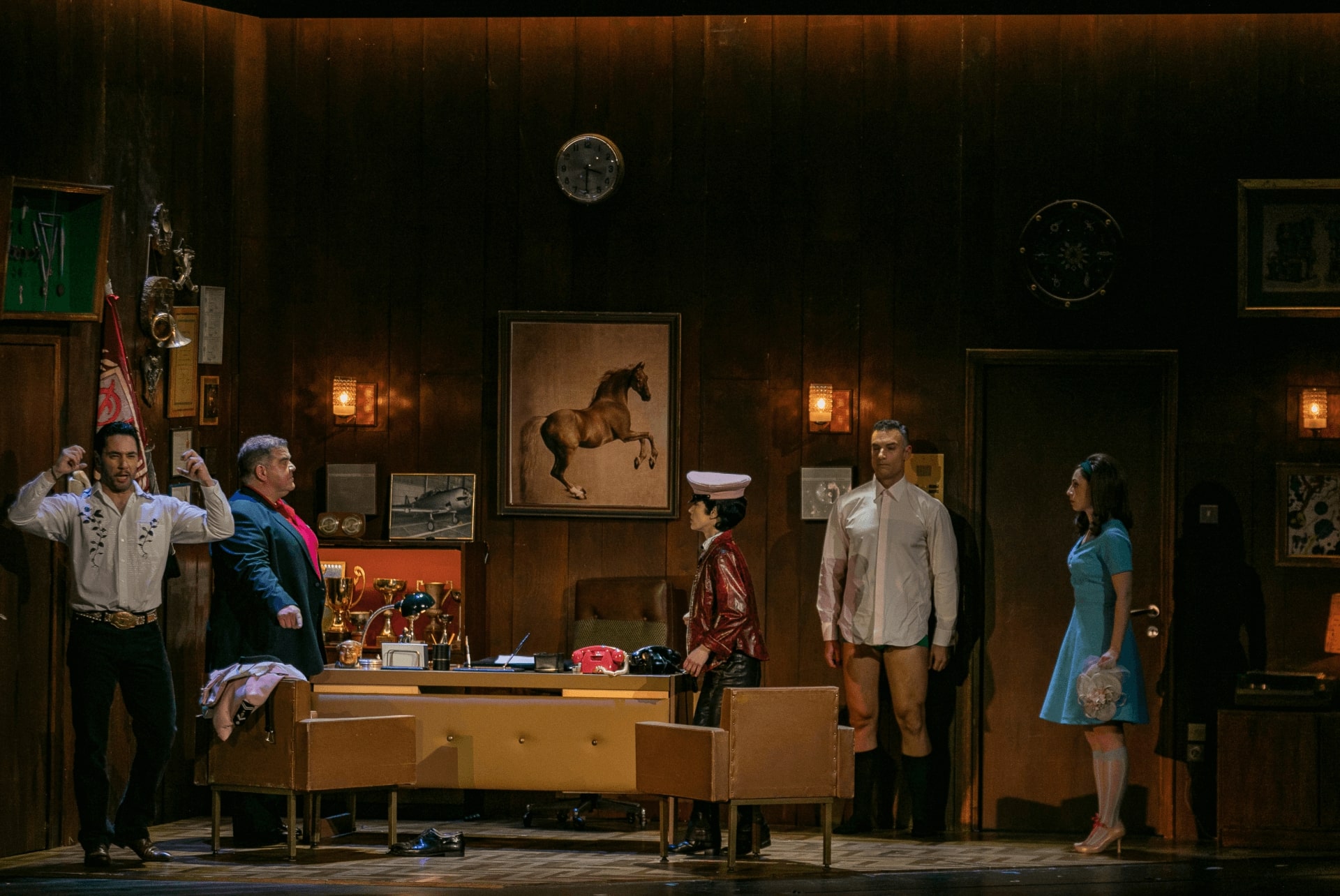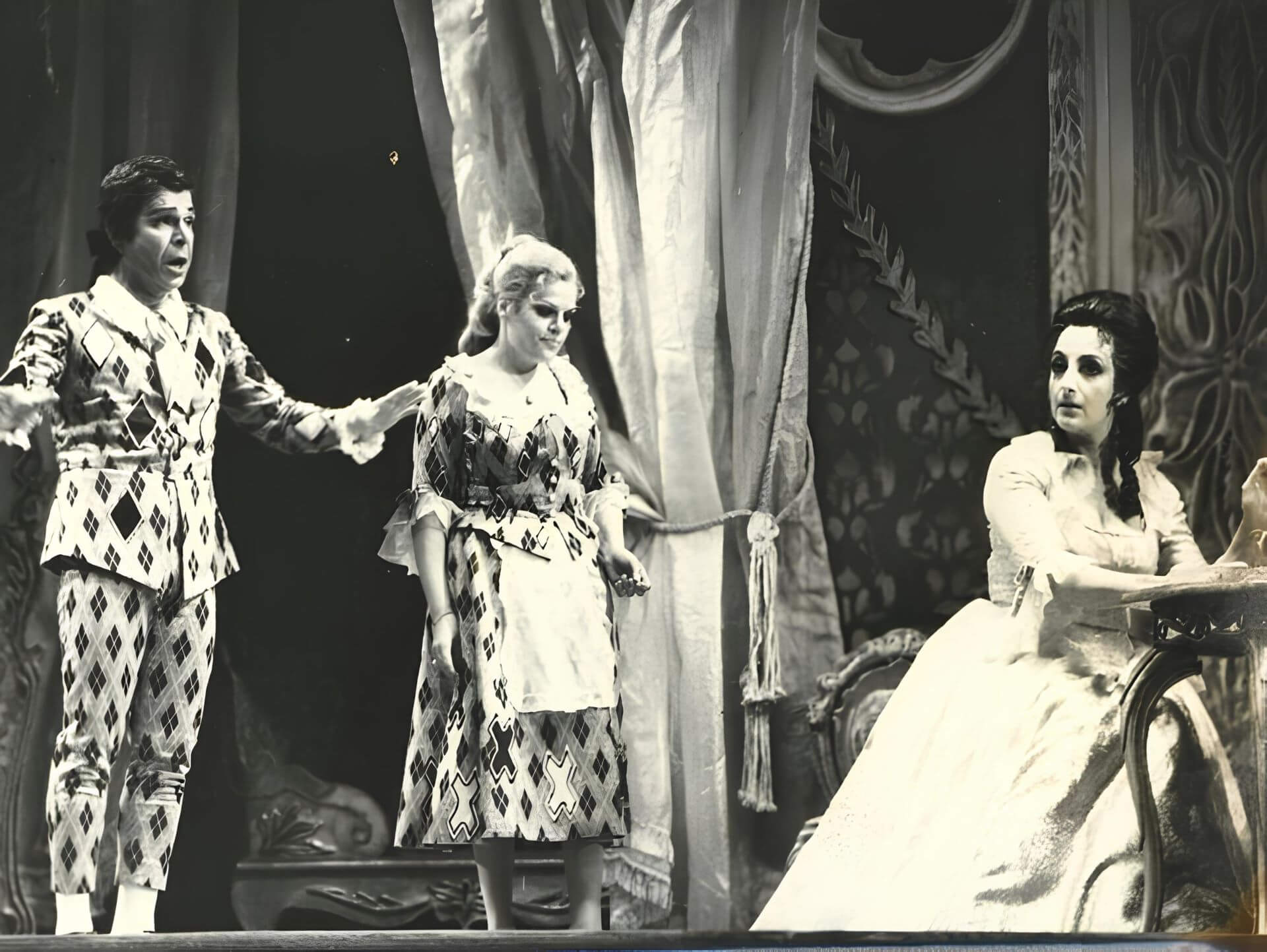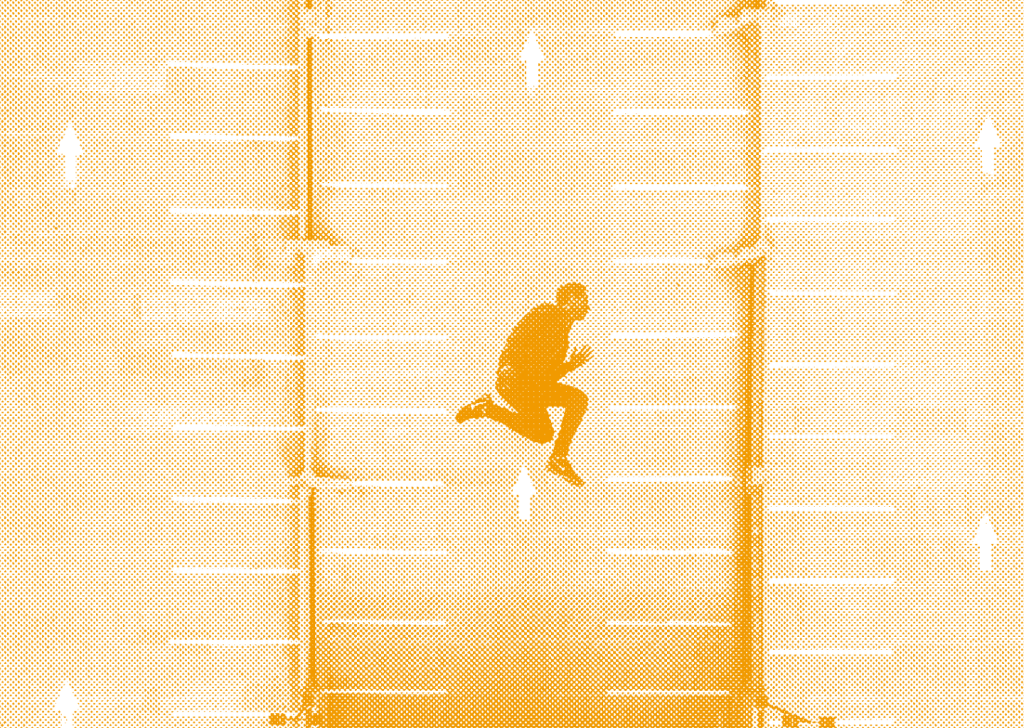
Set & Costume Design
CHAPTER 1 / INTRODUCTION
The section “Make your own opera” is aimed at students within and without the school setting, the educational community, and all those who like opera and the performing arts in general and would like to dare to create and stage their own performance. It is not a guide containing concrete steps or methodologies you need to follow to make your own show; “Make your own opera” is rather a source of inspiration, a section offering information that can surely be useful to you throughout the process, a section that aspires to make you feel creative without being preoccupied with whether or not you have the appropriate space, human resources or means. It is an educational tool that you can use for prearranged school celebrations – by implementing specific chapters of the provided material –, a big final presentation at the end of the school year, a performance you want to stage with your class, or even for your classes as part of the curriculum, starting from just one chapter. The stage that is hidden in your class is waiting for you to reveal it.
So make your own opera performance, and don’t get scared off by the title. Remember that opera constantly transforms and has a lot to teach you!
In this chapter we will explore two extremely important artistic fields that are related to a show’s image. Set design – the art of creating the stage world (sets) of a performance, and costume design – the selection or creation of a show’s costumes. In reality, we are talking about two different professions, that of the set designer and the costume designer, but since in some productions these two positions are combined into a single role, and always keeping in mind that you will be working in a school setting, in your case, these two professions could also be combined and explored concurrently.
Let’s us begin with a profession that requires a diverse set of skills and abilities and those who choose it need to have a little bit of a craftsman’s eye and a lot of an artist’s flair. We’re talking about set design, of course, the art of creating the stage set, the atmosphere and environment on stage. Respectively, the costume designer is the one responsible for the characters’ costumes, for designing, making and altering all the costumes of the performers on stage.
Exploring these two professions simultaneously, you will realise that in both cases, the creation of the sets and costumes is preceded by a series of steps and processes. Apart from putting in personal study and work, the set and costume designers are in constant collaboration with the director so that they can understand their perspective and reading of the work, and thus find the performance’s aesthetic identity. This job needs to be based on research, imagination and creativity, while maintaining a direct and close collaboration with the text and the director, and while always taking into consideration factors relevant to the performance’s atmosphere, the music, the movement and the lighting of every scene.
However, be careful! Keep in mind that a show’s set design, direction and costume design do not have to go hand in hand with the time when the work was written or set. As it is characteristically mentioned in the part “Opera everywhere”:
[…] stage directors often use costumes and scenery that do not correspond to the historical time of the work. Sometimes they choose to dress the characters in contemporary clothes and to place the action in a different setting to the one originally imagined by the composer and the librettist. In this way we, the audience, can understand better some ideas from the original text that may have changed with time or even come up with new ideas because of this new setting. See for example below the Greek National Opera’s recent production of the Marriage of Figaro [Le nozze di Figaro], where the stage director placed the action in a common apartment instead of the original palace. Whether in terms of music or stage direction, opera partly reflects and reproduces elements of modern culture that the audience enjoys to see on stage.

Snapshot from GNO’s production of Wolfgang Amadeus Mozart’s Le nozze di Figaro conducted by Vassilis Christopoulos and directed by Alexandros Efklidis (2021)

Snapshot from GNO’s production of Wolfgang Amadeus Mozart’s Le nozze di Figaro conducted by Dimitris Chorafas, Alkis Baltas and directed by René Terrason, Olympia Theatre (1979/80)
So let’s see below a series of steps we can follow, in order to design a productions’ stage set or costumes.
CHAPTER 2 / POOL OF IDEAS
Reading & analysis of the work
In all the artistic fields you have read about in Make Your Own Opera, we always begin with reading and analyzing the work. Similarly, with the two fields we are going to treat in this chapter, you will begin the same way.
The way each professional approaches and chooses to read the work is different. Each professional reads the work from a different point of view, therefore a set designer or costume designer’s reading focuses on some specific points related to their area of expertise. When studying a work, a set or costume designer always has in mind how eveything that is described in the story can be integrated into a stage context, how this context will combine their ideas in a way that can serve the actors, and how the characters on paper will take form through their appearance, clothing, accessories etc.
After a thorough reading and comprehension of the text, read it again, this time taking notes regarding the image and sensory characteristics of the sets and costumes. Set and costume sketches, colours, materials, construction drawings – all these will help you achieve your vision about the sets and costumes.
Discussion with the director and the artistic team
The set/costume designer’s collaboration with the director needs to be very close and constant. It is very important that the set/costume designer, apart from their personal interpretation of the work, is aware of the director’s reading and analysis. The time, place and social backdrop against which the director will set the work are the most important elements a set/costume designer needs to know. Through the constant sharing of ideas with the director, the set/costume designer can move on to developing their core concept about the sets and costumes.
Research, collection & selection of ideas and materials
Having discussed with the director and knowing the story’s social background, time and place, it is now time to dive into research! You can read, search, watch, gather all those sources of inspiration that will help you shape you own ideas. Sources of inspiration from other works, the visual arts, films, and anything else you can imagine. Create one or more (digital or tangible) mood boards and gather all your ideas there! A mood board is a collage of references that can include almost everything: photographs, drawings, sketches, illustrations, colour pallets, materials, fabrics, textures, anything that can help you shape the direction of your work.
Construction
After completing your research on the sources of inspiration, the materials and features you want to employ, it is time to materialize your concept of your show’s sets and costumes.
Most likely, the construction of the set will not be the easiest task in our setting, so while creating your concept, reflect more on the things you could make use of, objects and materials that are already available. Another idea is to think of what you could make with materials you can easily find all around you, and which, otherwise, would end up in the trash (bottles, paper boxes, plastic bags etc.).
See the trailer from the Patari Project company’s production Four Seasons, an ecological performance presented on the GNO Alternative Stage in 2019.
Κατασκευή
This production, based on Antonio Vivaldi’s Four Seasons which praises the alternations of nature and the circularity of time, aimed at acquainting children with circular economy and sustainability. It was created as a music theatre performance that touches upon questions relating to our attitude toward the environment and bringing onto the stage issues such as the reduction in the use of plastic, food waste and circular economy. Could it have been possible, therefore, to use large quantities of plastic for this production? The answer is rather negative. The costume designer in this case transformed disposable objects such as plastic bags, bottles, straws and gloves into costumes.
Given all of the above, it is now time for you to make your own proposals about the set and costumes of your show. Make use of the following mood boards and complete your ideas.
ACTIVITY 1 / SET & COSTUME DESIGN
Introduction
The two activities of this chapter are based on the mood board concept mentioned above. The two activities of this chapter are based on the mood board concept mentioned above. Using an excerpt from Goethe’s Faust [Texts of Modern Greek Literature, Second Grade of High School], you can try to make a mood board for the set and costumes of this scene/monologue. Read the excerpt below:
Faust was probably a historical figure that lived in the 16th century in Germany and has been the typical exponent of the restless and inquisitive spirit of the Renaissance man. He was a strange man who toured to big European cities and presented himself as a doctor, alchemist, astrologer, miracle-maker and magician. He soon acquired a great reputation and his achievements made him an urban legend. In fact, in a popular pamphlet released in 1587 it was claimed that his accomplishments were a result of a pact he had formed with the Devil, to whom he had sold his soul. Reworking these two legends two centuries later, Goethe creates his own Faust, one of the greatest works of world literature. The first part – which is also the most important – was published in 1808. In this poetic composition in the form of a play with a plot and action divided into scenes, with characters and deep philosophical ramifications, Goethe turns Faust into an ever-lasting symbol of man’s titanic will and insatiable desire to know every secret and give answers to all of life’s problems. The following excerpt is from Faust’s first monologue.
Faust
(Excerpt)
I’ve studied now Philosophy
And Jurisprudence, Medicine,—
And even, alas! Theology,—
From end to end, with labor keen;
And here, poor fool! with all my lore
I stand, no wiser than before:
I’m Magister—yea, Doctor—hight,
And straight or cross-wise, wrong or right,
These ten years long, with many woes,
I’ve led my scholars by the nose,—
And see, that nothing can be known!
That knowledge cuts me to the bone.
I’m cleverer, true, than those fops of teachers,
Doctors and Magisters, Scribes and Preachers;
Neither scruples nor doubts come now to smite me,
Nor Hell nor Devil can longer affright me.
For this, all pleasure am I foregoing;
I do not pretend to aught worth knowing,
I do not pretend I could be a teacher
To help or convert a fellow-creature.
Then, too, I’ve neither lands nor gold,
Nor the world’s least pomp or honor hold—
No dog would endure such a curst existence!
Wherefore, from Magic I seek assistance,
That many a secret perchance I reach
Through spirit-power and spirit-speech,
And thus the bitter task forego
Of saying the things I do not know,—
That I may detect the inmost force
Which binds the world, and guides its course;
Its germs, productive powers explore,
And rummage in empty words no more!
O full and splendid Moon, whom I
Have, from this desk, seen climb the sky
So many a midnight,—would thy glow
For the last time beheld my woe!
Ever thine eye, most mournful friend,
O’er books and papers saw me bend;
But would that I, on mountains grand,
Amid thy blessed light could stand,
With spirits through mountain-caverns hover,
Float in thy twilight the meadows over,
And, freed from the fumes of lore that swathe me,
To health in thy dewy fountains bathe me!
Translator: Bayard Taylor
Using the following mood board, make a “map” of this scene’s scenography.
Step 1
Before starting the process of collecting your references and developing your concept, answer the following questions:
- Who are the characters that appear in this scene?
- At what time of day do you want this scene to be set? In the evening, morning or afternoon?
- In what time of the year will it unfold?
- Against what social backdrop do you want to place this scene, today, in the past or in the future? In what social setting will your Faust be placed?
Step 2
Based on your answers to these questions, make your own mood board!
ACTIVITY 2 / SET & COSTUME DESIGN
In activity 2 you can make a map of your Faust’s image through the mood board. The answers to these activities will help you create Faust’s image.
VIDEO
While exploring the above ideas, proposals and steps, feel free to experiment with creating the set and costumes for a work of the performing arts. To get more ideas, you can watch Pavlos Thanopoulos in the video below sharing with you relevant information, as well as his experience as a set/costume designer for opera/music theatre works.
Pavlos Thanopoulos talks about his experience as a set/costume designer for opera/music theatre works. Video produced by Odd Bleat.




